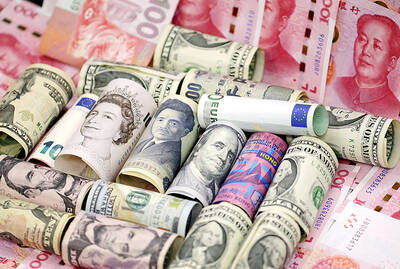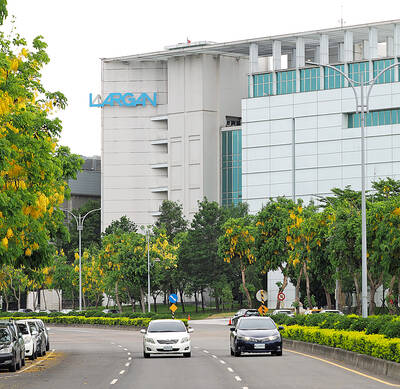The Council for Economic Planning and Development (CEPD) has drafted a plan to attract investment and skilled immigrants in light of the country's falling birth rate and slowing population growth, an official said yesterday.
The council has estimated that Taiwan will enter a period of negative population growth from 2019, the official said. Trained foreign professionals and young skilled workers must be recruited to sustain development, he said.
The council has conducted a feasibility study on attracting investment and skilled immigrants and reviewed immigration regulations adopted by Singapore and Japan, he said.
Foreign economic, financial and technological personnel under 40 years of age, particularly those from countries with a per capita national income lower than Taiwan's, will be prime targets under the plan, he said.
East European countries could be a good source of personnel, he said, noting that Ukraine has an advanced defense industry.
According to the council's plan, Taiwan could take in up to 1 million skilled and investment immigrants by 2050. In the first category, chief executives, fund managers, scientists, engineers, medical doctors, graduate students, skilled technicians and special professionals would be welcomed.
Those seeking investment immigration would have to invest a specified amount of money in launching a new business, expanding their existing businesses, purchasing real estate or depositing a large amount of cash in local banks.
The immigration promotion plan still focuses on theoretical model analysis and collection of information on relevant foreign regulations and systems, he said.
The council study shows that Britain has embraced 600,000 new immigrants since it adopted an open-door immigration policy in 2004, the official said, which has had a strong impact on British society, including its job market.
In Singapore, foreign-born residents account for 18 percent of the city-state's population.
sSingapore has tied investment to immigration, offering permanent residency to those who set up companies or launch investment projects in the city state.
The council official said the government will evaluate all the possible impacts on the nation's income, economy and job market once the new immigration policy is put into practice.
The official said the government would not close the door to qualified Chinese high-tech personnel. But given the cross-strait situation, the government must make a further review before embracing other Chinese immigrants, he said.
According to National Immigration Agency statistics, there are 314,000-plus foreign laborers and more than 14,000 foreign white-collar workers in the country.
Of the latter group, more than 5,000 are teachers, more than 3,000 are business professionals and more than 2,000 are engineers.
The small number of foreign white-collar professionals, coupled with their excessive concentration in just three professions, particularly teaching, indicates that incentives and job opportunities for foreigners remain limited in Taiwan, immigration officials said.

Taiwan’s foreign exchange reserves hit a record high at the end of last month, surpassing the US$600 billion mark for the first time, the central bank said yesterday. Last month, the country’s foreign exchange reserves rose US$5.51 billion from a month earlier to reach US$602.94 billion due to an increase in returns from the central bank’s portfolio management, the movement of other foreign currencies in the portfolio against the US dollar and the bank’s efforts to smooth the volatility of the New Taiwan dollar. Department of Foreign Exchange Director-General Eugene Tsai (蔡炯民)said a rate cut cycle launched by the US Federal Reserve

Handset camera lens maker Largan Precision Co (大立光) on Sunday reported a 6.71 percent year-on-year decline in revenue for the third quarter, despite revenue last month hitting the highest level in 11 months. Third-quarter revenue was NT$17.68 billion (US$581.2 million), compared with NT$18.95 billion a year earlier, the company said in a statement. The figure was in line with Yuanta Securities Investment Consulting Co’s (元大投顧) forecast of NT$17.9 billion, but missed the market consensus estimate of NT$18.97 billion. The third-quarter revenue was a 51.44 percent increase from NT$11.67 billion in the second quarter, as the quarter is usually the peak

The US government on Wednesday sanctioned more than two dozen companies in China, Turkey and the United Arab Emirates, including offshoots of a US chip firm, accusing the businesses of providing illicit support to Iran’s military or proxies. The US Department of Commerce included two subsidiaries of US-based chip distributor Arrow Electronics Inc (艾睿電子) on its so-called entity list published on the federal register for facilitating purchases by Iran’s proxies of US tech. Arrow spokesman John Hourigan said that the subsidiaries have been operating in full compliance with US export control regulations and his company is discussing with the US Bureau of

Pegatron Corp (和碩), a key assembler of Apple Inc’s iPhones, on Thursday reported a 12.3 percent year-on-year decline in revenue for last quarter to NT$257.86 billion (US$8.44 billion), but it expects revenue to improve in the second half on traditional holiday demand. The fourth quarter is usually the peak season for its communications products, a company official said on condition of anonymity. As Apple released its new iPhone 17 series early last month, sales in the communications segment rose sequentially last month, the official said. Shipments to Apple have been stable and in line with earlier expectations, they said. Pegatron shipped 2.4 million notebook